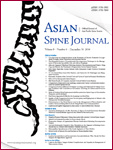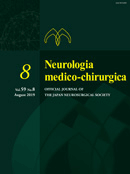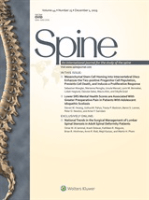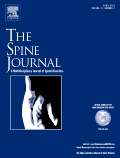
Asian Spine Journal
Scope & Guideline
Championing High-Quality Research in Orthopedics and Spine Surgery
Introduction
Aims and Scopes
- Spinal Surgery Techniques and Innovations:
The journal emphasizes novel surgical techniques, including minimally invasive approaches, robotic surgery, and endoscopic methods, aimed at improving patient outcomes and recovery times. - Biomechanical Studies and Surgical Outcomes:
Research related to the biomechanical aspects of spine surgery, including the effectiveness of various fixation methods and the analysis of surgical outcomes for different patient populations. - Management of Spinal Pathologies:
The journal covers a broad spectrum of spinal pathologies, including degenerative diseases, trauma, tumors, and congenital deformities, focusing on both surgical and non-surgical management options. - Emerging Technologies in Spine Care:
A growing interest in the application of artificial intelligence, machine learning, and advanced imaging techniques to enhance diagnosis, treatment planning, and predict patient outcomes. - Patient-Centric Research:
Studies focusing on patient-reported outcomes, quality of life, and the psychosocial aspects of living with spinal disorders, highlighting the importance of patient experience in treatment efficacy.
Trending and Emerging
- Minimally Invasive and Robotic Surgery:
A significant increase in studies related to minimally invasive surgical techniques and robotic assistance in spine surgery, showcasing a trend towards less invasive procedures that enhance recovery. - Artificial Intelligence and Machine Learning:
The application of AI and machine learning for predictive analytics in surgical outcomes and patient management is trending, indicating a shift towards data-driven approaches in spine surgery. - Comprehensive Patient Outcome Assessments:
An emerging emphasis on evaluating patient-reported outcomes and satisfaction, reflecting a broader understanding of the importance of patient perspectives in treatment efficacy. - Biological and Regenerative Techniques:
Research focusing on biological solutions, such as stem cells and growth factors, for enhancing healing and recovery in spinal procedures is gaining traction. - Advanced Imaging Techniques:
An increase in studies utilizing advanced imaging technologies, including MRI and CT, for better diagnosis and surgical planning, reflecting the importance of precise imaging in modern spine care.
Declining or Waning
- Traditional Open Surgical Techniques:
There is a noticeable decline in research focused solely on traditional open surgical techniques, as interest shifts towards minimally invasive and endoscopic approaches that promise better recovery and lower complication rates. - Non-Surgical Interventions:
Research on conservative treatments, such as physical therapy and medication for spinal disorders, appears to be decreasing as surgical options gain more focus and technological advancements are explored. - Aging Population Studies:
Although still relevant, the specific focus on aging-related spinal issues is waning, likely due to the increasing emphasis on innovative surgical solutions and less on demographic studies.
Similar Journals

NEUROLOGIA MEDICO-CHIRURGICA
Pioneering Research for a Healthier TomorrowNEUROLOGIA MEDICO-CHIRURGICA, published by the JAPAN NEUROSURGICAL SOCIETY, stands as a vital resource in the fields of neurology and surgery, featuring an impressive track record since its inception in 1959. With both an ISSN 0470-8105 and E-ISSN 1349-8029, this journal has embraced an Open Access model since 2000, ensuring that cutting-edge research and clinical advances are readily accessible to a global audience. The journal is currently ranked in the Q2 quartile for Neurology (clinical) and the prestigious Q1 quartile for Surgery as of 2023, highlighting its impact within these disciplines. With Scopus rankings placing it at #145 in Surgery and #206 in Neurology, NEUROLOGIA MEDICO-CHIRURGICA continues to play a crucial role in advancing medical knowledge, making it an indispensable reference for researchers, clinicians, and students alike. The journal's broad scope encompasses both clinical neurology and surgical techniques, positioning it at the forefront of interdisciplinary collaboration in the ever-evolving field of neurosurgery.

International Journal of Spine Surgery
Unlocking Innovations in Orthopedic Care.Welcome to the International Journal of Spine Surgery, a premier platform dedicated to advancing the field of spine surgery and orthopedics. Published by the International Society for Advancement of Spine Surgery (ISASS), this esteemed journal operates under an Open Access model, enabling broad dissemination of research findings and clinical advancements. Spanning a rich history since its establishment in 2012, the journal has rapidly become a pivotal resource, currently positioned in the Q2 quartile for Orthopedics and Sports Medicine and Q1 for Surgery, reflecting its significant contribution to the medical community. With a Scopus rank of #177 in Surgery and #133 in Orthopedics, it is recognized for publishing high-quality, impactful research. The journal's commitment is to provide researchers, clinicians, and students with accessible, evidence-based insights into the latest innovations and practices in spine surgery, fostering greater collaboration and knowledge transfer within the medical field. Join us in exploring the latest advances and enhancing your understanding of spine-related healthcare.

Turk Gogus Kalp Damar Cerrahisi Dergisi-Turkish Journal of Thoracic and Cardiovascular Surgery
Unveiling Insights in Cardiovascular and Thoracic Medicine.Welcome to the Turk Gogus Kalp Damar Cerrahisi Dergisi (Turkish Journal of Thoracic and Cardiovascular Surgery), a distinguished publication focused on advancing the fields of cardiovascular and thoracic surgery. Published by BAYCINAR MEDICAL PUBL, this journal plays a crucial role in disseminating high-quality research and clinical findings from Turkey and beyond. With an ISSN of 1301-5680, the journal covers interdisciplinary topics while holding a respectable Q3 ranking in Surgery and Q4 rankings in both Cardiology and Pulmonary Medicine as of 2023. Although it currently operates on a subscription basis, researchers and practitioners can access vital insights that drive innovation and improve patient outcomes in cardiovascular care. Established to foster knowledge sharing among professionals and scholars, the journal is essential for anyone involved in the cardiovascular and thoracic surgery landscape. With a commitment to high standards and scholarly excellence, the Turk Gogus Kalp Damar Cerrahisi Dergisi invites you to explore the latest research that shapes the future of patient care.

SPINE
Leading the way in spine-related clinical innovation.SPINE, published by Lippincott Williams & Wilkins, is a leading academic journal in the fields of Orthopedics, Neurology, and Sports Medicine. Established in 1976, this reputable journal has made significant contributions to advancing clinical and scientific knowledge, with its impactful research evidenced by its prestigious Q1 classification across three essential categories in 2023 and a notable ranking of #51 in Orthopedics and Sports Medicine and #117 in Clinical Neurology as per Scopus. SPINE aims to disseminate high-quality research articles, reviews, and clinical studies that address cutting-edge topics and challenges in spine-related health, thereby serving as an invaluable resource for researchers, healthcare professionals, and students alike. With its commitment to rigorous peer review and a wide readership, SPINE continues to be at the forefront of innovations in spine health & disease from 1976 to 2024, upholding its reputation as a catalyst for progress in the medical community.

Spine Deformity
Pioneering advancements in spine surgery.Spine Deformity is a leading academic journal dedicated to advancing the field of orthopedic surgery, with a particular focus on the complexities of spinal deformities. Published by SPRINGER in the Netherlands, this esteemed journal boasts an impressive impact factor and has established itself as a critical resource for researchers, clinicians, and students alike. With its Q2 ranking in Orthopedics and Sports Medicine in 2023, Spine Deformity continues to provide a platform for high-quality, peer-reviewed research from 2012 to 2024, enriching the global discourse surrounding spinal health. The journal emphasizes the integration of empirical studies, clinical trials, and innovative treatment methodologies, fostering a comprehensive understanding of spine-related challenges. Though primarily print-based, readers can access essential research findings that contribute to the improvement of patient care and outcomes in spine surgery. As it occupies a pivotal role in the orthopedic field, Spine Deformity is essential for those dedicated to pioneering advancements in spinal deformity management.

Spine Journal
Fostering collaboration in spine disorder management.The Spine Journal, published by Elsevier Science Inc, is an esteemed academic journal dedicated to the fields of neurology, orthopedics, and sports medicine, established to provide a comprehensive platform for the dissemination of cutting-edge research. With an impressive impact factor and a distinguished reputation, it consistently ranks in the Q1 category across multiple medical disciplines, including neurology (clinical), orthopedics and sports medicine, and surgery. As of 2023, it holds prestigious ranks such as #17 in Medicine (Surgery) and #15 in Medicine (Orthopedics and Sports Medicine) according to Scopus, underscoring its significance and influence within the academic community. Researchers, healthcare professionals, and students benefit from its commitment to advancing knowledge and fostering collaboration in the management of spine-related disorders and injuries. While it does not currently offer open access options, The Spine Journal remains an essential resource for those seeking to stay at the forefront of developments in the spine care field, with content spanning from 2001 to 2024, providing valuable insights into both clinical practices and innovative research methodologies.

NEUROSURGICAL REVIEW
Exploring the frontiers of neurosurgery since 1978.NEUROSURGICAL REVIEW is an esteemed journal dedicated to advancing the field of neurosurgery, published by Springer, one of the leading global publishers in academic research. With a distinguished history dating back to 1978, this influential journal serves as a vital resource for researchers, practitioners, and students, providing a platform for high-quality original research, case studies, and reviews that push the boundaries of knowledge in neurosurgery. The journal enjoys a remarkable reputation, holding a Q1 ranking in Medicine (miscellaneous) and Surgery, alongside a robust Q2 in Clinical Neurology as reported in 2023. Furthermore, it is recognized in Scopus with notable rankings, placing it in the 88th percentile in Surgery and the 68th percentile in Clinical Neurology. Although it does not offer open access, NEUROSURGICAL REVIEW remains pivotal in disseminating critical findings and fostering collaboration within the neuroscience community. As it continues to evolve through its convergence years up to 2024, the journal aims to address emerging challenges and innovations in the field, making it an essential publication for anyone involved in neurosurgical research and practice.

JOURNAL OF ORTHOPAEDIC SCIENCE
Elevating standards in orthopedics and sports medicine.JOURNAL OF ORTHOPAEDIC SCIENCE, published by Elsevier, is a premier journal dedicated to advancing the field of orthopedics and related surgical practices. With an ISSN of 0949-2658 and an E-ISSN of 1436-2023, this journal serves as a vital resource for researchers, practitioners, and students interested in evidence-based advancements in orthopedic science. As of 2023, it holds a commendable Q2 quartile ranking in both orthopedics and sports medicine, as well as surgery, reflecting its strong impact in these fields. The journal encompasses a wide range of topics, including clinical research, surgical techniques, and the latest innovations in orthopedic implants and rehabilitation strategies. Its Scopus rankings further emphasize its relevance, placing it in the 65th percentile for surgery and the 54th for orthopedics and sports medicine. Researchers and clinicians looking to enhance their knowledge and stay abreast of the latest developments will find the JOURNAL OF ORTHOPAEDIC SCIENCE an indispensable tool in their professional arsenal.

Techniques in Orthopaedics
Empowering Practitioners with Cutting-Edge InsightsTechniques in Orthopaedics, published by Lippincott Williams & Wilkins, is a pivotal journal in the realm of Orthopaedics and Sports Medicine. With an ISSN of 0885-9698 and E-ISSN of 2333-0600, this journal serves as a vital resource for practitioners, researchers, and students alike, offering a platform for the latest advancements and techniques in the field. Although currently categorized in Q4 within its discipline and ranked in the 15th percentile in Scopus rankings, its commitment to delivering high-quality content since its inception in 1986 marks it as an essential reference point for ongoing research and clinical practice. While not open access, the journal provides subscription options to ensure access to a wealth of valuable information pertaining to innovative methodologies and clinical expertise in orthopaedics. With its focus on advancing practice, Techniques in Orthopaedics aims to educate and inspire ongoing development and understanding within this vital area of healthcare.

SURGICAL CLINICS OF NORTH AMERICA
Transforming Surgical Knowledge into PracticeSurgical Clinics of North America, published by W B Saunders Co-Elsevier Inc, is an esteemed journal in the field of surgery, recognized for its commitment to advancing surgical knowledge and practice since its inception in 1945. With an impressive impact factor and ranked in the Q1 category of surgery journals, it occupies a prominent position in the academic landscape, with a Scopus rank of #53 out of 551, placing it in the 90th percentile for medicine and surgery. The journal provides a platform for original research, comprehensive reviews, and critical analyses, appealing to surgeons, medical professionals, and students alike. Although it does not have open-access options, it remains a vital resource for those looking to stay updated on the latest surgical techniques, innovations, and insights into operative challenges. The journal's rigorous peer-review process ensures that only high-quality articles contribute to the ongoing dialogue within the surgical community, making it an indispensable tool for enhancing clinical practices and fostering educational growth.